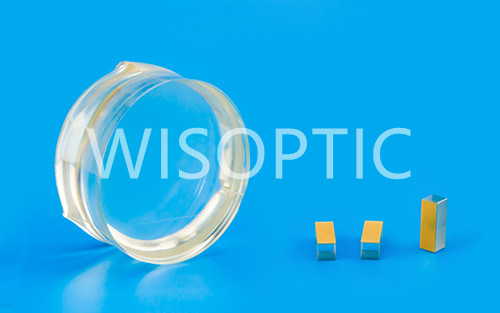Photorefractive effect is the basis of holographic optical applications, but it also brings troubles to other optical applications, so improving the photorefractive resistance of lithium niobate crystal has been paid great attention, among which doping regulation is the most important method. In contrast to photorefractive doping, anti-photorefractive doping uses elements with non-variable valent to reduce the photorefractive center. In 1980, it was reported that the photorefractive resistance of high ratio Mg-doped LN crystal increases by more than 2 orders of magnitude, which attracted extensive attention. In 1990, researchers found that zinc-doped LN has high photorefractive resistance similar to magnesium-doped LN. Several years later, scandium-doped and indium-doped LN were found to have photorefractive resistance as well.
In 2000, Xu et al. discovered that high ratio Mg-doped LN crystal with high photorefractive resistance in visible band has excellent photorefractive performance in UV band. This discovery broke through the understanding of the photorefractive resistance of LN crystal, and also filled the blank of photorefractive materials applied in ultraviolet band. The shorter wavelength means that the size of holographic grating can be smaller and finer, and can be dynamically erased and written into the grating by ultraviolet light, and read out by red light and green light, so as to realize the application of dynamic holographic optics. Lamarque et al. adopted the high ratio Mg-doped LN crystal provided by Nankai University as the UV photorefractive material and realized programmable two-dimensional laser marking by using two-wave coupled light amplification.
In the early stage, anti-photorefractive doping elements included divalent and trivalent elements such as magnesium, zinc, indium and scandium. In 2009, Kong et al. developed anti-photorefractive doping using tetravalent elements such as hafnium, zirconium and tin. When achieving the same photorefractive resistance, compared with divalent and trivalent doped elements, the doping amount of tetradvalent elements is less, for example, 4.0 mol% hafnium and 6.0 mol% magnesium doped LN crystals have similar photorefractive resistance, 2.0 mol% zirconium and 6.5 mol% magnesium doped LN crystals have similar photorefractive resistance. Moreover, the segregation coefficient of hafnium, zirconium and tin in lithium niobate is closer to 1, which is more favorable for the preparation of high-quality crystals.
High-quality LN developed by WISOPTIC [www.wisoptic.com]
Post time: Jan-04-2022

